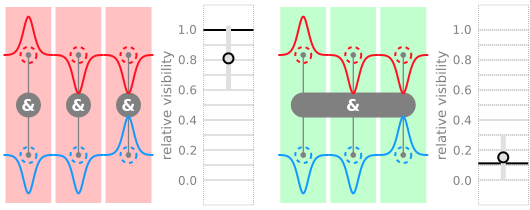A new way to control interference, a phenomenon that appears when waves meet, is realized by manipulating individual quantum particles of light. The interaction of waves lies at the heart of optics and can be observed in everyday situations, such as colorful rainbow patterns in oily films, and finds use in modern applications, such as holograms. But light can also behave as indivisible quantum particles, named photons. Particle properties can significantly alter interference effects and has practical implications for future photonic quantum computation and communications technologies, relying on complex networks in which quantum particles interact. Here, we explore for the first time the intricate interplay between classical and quantum interference by controlling classical wave properties by means of a reconfigurable network to alter quantum interference. With this approach, we are able to the characterize previously unknown quantum effects that occur when particle and wave features coexist in the quantum world, potentially leading to new applications which can now exploit such advanced quantum control mechanisms.
This work has been published in Physical Review Letters [https://doi.org/10.1103/PhysRevLett.125.213604].

